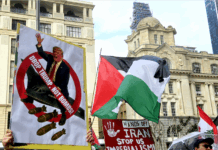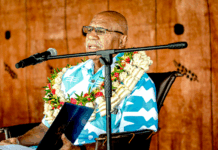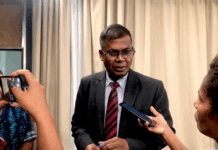
By Roy Abrhamn Narra and Carlo Casingcasing in Manila
Blacklists developed by the Canadian government’s Department of Foreign Affairs and International Trade (DFAIT) have tagged the Philippines as having the third highest number of individual terrorists behind Saudi Arabia and Iraq.
The DFAIT list of more than 1800 identified individual terrorists, and a separate list for groups, was released by Canada’s Office of the Superintendent of Financial Institutions last week and posted under the office’s anti-terrorism financing page.
About 68 Filipinos were identified on that February 2017 DFAIT list, with the Philippine total behind the 113 of Saudi Arabia and the 88 of Iraq.
The listed Filipinos are affiliated with local rebel groups like the National Democratic Front (NDF) and Abu Sayyaf, which were identified by the Philippine government as terrorist organisations.
On the list is Jose Maria Sison of the National Democratic Front (NDF). The NDF group was negotiating a peace deal with the Philippine government until President Rodrigo Duterte ordered government negotiators on February 4 to pull out of the talks.
Another person on the list is Mukhlis Saifulla, one of the suspects in the bombing of the Light Railway Transit couches on 30 December 2000.
Also on the list is Julkipli Salim Salamuddin, an Abu Sayyaf member arrested in 2003 for a bombing incident in Zamboanga City that killed three, including an American green beret (special force) officer.
Some Filipinos detained
Some of those Filipinos identified in the list have been detained, like five of them who are members of the Rajah Solaiman Movement
The DFAIT also has a separate list of terrorist groups. Those from the Philippines made part of the list include the Aub Sayyaf group, the New People’s Army/Communist Part of the Philippines, the Southeast Asian group Jema’ah Islamiyah that has operations in the Philippines, and the Rajah Solaiman Movement.
The lists’ release comes at a time Philippine President Rodrigo Duterte had called for the end of peace negotiations between the government and the NDF, as well as his orders to pummel the Abu Sayyaf group.
In the list of individuals, Yemen was ranked fourth with 43 terrorists. Syria (36) and Russia (33) were fifth and sixth.
Other countries included in the DFAIT terror list (individuals) is the United Kingdom (26), France (23), Turkey (10), and even the United States (seven).
US President Donald Trump earlier banned the entry of nationals from Iraq, Syria, Iran, Sudan, Libya, Somalia, and Yemen to the US as part of his administration’s anti-terror campaign.
But among the groups listed, three Filipino groups who were earlier identified to be linked with ISIS (Islamic State of Iraq and Syria) were not in the DFAIT list: the Ansarul Khilafa Philippines, the Maute group, and the Bangsamoro Islamic Freedom Fighters.
Maute group tagged
Duterte tagged the Maute group, allegedly led by Abdullah Maute, as behind the September 2, 2016, bombing of a night market in Davao City (President Duuterte’s hometown) that killed 14 and injured 70 people.
The Canadian terrorism database has included notorious terrorists like Ibrahim al-Asiri, Ayman al-Zawahiri and Nasir al Whuayshi, as well as Hasan Izz-al-Din and Abdul Rahman Yasin (both tagged by the American Federal Bureau of Investigation as among the most wanted terrorists). Among the groups included in the list were ISIS, Al-Qaeda, the Taliban and Boko Haram.
The lists were posted on the anti-terrorism financing page of the Office of the Superintendent of Financial Institutions. Last year, though not related to terrorist financing, the Philippines was on the receiving end of the world’s largest online bank hacking incident that saw the Bangladesh central bank lose US$81 million to casino operators based in Manila.
Some money had been recovered and returned to the Bangladeshi government, while a Filipino-run remittance company and a commercial bank are being investigated.
Roy Abrhamn Narra and Carlo Casingcasing are graduate journalism students of the University of Santo Tomas. This story was reported as part of the course “Global Journalism Practice and Studies” at UST.














































